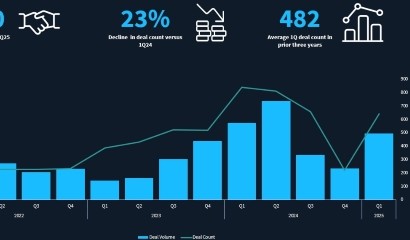Libor transition in EM proves a feat though work still to be done
For swathes of market players across various asset classes, 30 June 2023 was marked in the diary as a monumental day – when Libor (London Interbank Offered Rate), touted as the most important number in finance, finally came to an end.
That followed an earlier deadline of 31 December 2021, after which one-week and two-month US dollar Libor settings were no longer published. After this date, no new US dollar-denominated loan transactions could be tied to Libor for those tenors, and instead had to be signed to a risk-free reference rate (RFR).
The enormous move away from the scandal-ridden benchmark was spearheaded by regulators including the Financial Conduct Authority (FCA), which regulates the ICE Benchmark Administration (IBA), Libor’s administrator.
In anticipation of the June 2023 deadline, banks and borrowers alike confronted the colossal task of transitioning outstanding USD Libor-linked legacy loans to the benchmark’s preferred replacement, SOFR (Secured Overnight Financing Rate).
The transition away from Libor, however, was somewhat more challenged in emerging markets (EM), underpinned by various educational, logistical, and financial factors.
Various debates brewed over who – namely the banks or the borrowers – should assume responsibility for the lengthy, costly, and complicated upheaval.
Nathaniel Armstrong, managing partner at Dentons in Abu Dhabi, acknowledged that while neither borrowers nor banks wanted to pay for the transition, borrowers ultimately had to take it on the chin for the most part.
“In hindsight, people expected the transition to be simpler than it was,” said Armstrong. “It may have been easier if the transition was legislatively driven, but it was only partly legislatively led, with many sections left for banks and lawyers to work through.”
“The whole market went through a massive education exercise, especially more locally focused borrowers and banks that had less exposure to markets that had already transitioned from other benchmarks,” he continued.
While the transition reached its apex this summer, market participants say there is still work to be done, demonstrated by the introduction of a synthetic USD Libor setting, which has acted as a safety net for tardy borrowers.
Keith Taylor, managing director at the Loan Market Association (LMA) in London, noted that while the shift may have run closer to the deadline than people would have liked, the market overall accepted the transition and reacted accordingly.
“Challenges existed in emerging markets, but regulatory communication, education and frankly, the 30 June deadline in itself, were catalysts for the transition,” Taylor said, while acknowledging that there were “harder-to-reach” areas of the market.
“Lenders became more proactive; facility agents came on board with the transition and the required adjustments were made to systems,” he added.
Synthetic Libor – a temporary backstop?
Unsurprisingly, some EM borrowers failed to meet the June deadline for transitioning their legacy loan paper, which did not already include fall-back language, to an RFR. Market participants deeply embedded in EM said this was, in part, driven by a broader lack of urgency, likely resulting from the relatively lower education and regulatory input surrounding the transition in certain regions.
Logistical hurdles also warped timelines. Borrowers were required to amend existing treasury management systems to comply with new RFR calculations, a task that required notable investment and was “not a priority” for some desks, according to one EM-focused loans banker in London.
Market participants were unable to provide numerical estimates on the number of remaining EM loans that have yet to be transitioned as of September 2023, though in 2021, the ARRC (Alternative Reference Rates Committee) estimated that approximately USD 74trn of USD Libor exposures – across various asset classes – would remain beyond the June 2023 deadline.
The FCA moved to prevent market disruption by announcing in April this year that it would require IBA to continue publishing certain USD Libor settings, namely the one-, three- and six-month settings, using a synthetic methodology.
That means borrowers that have still not been able to transition their legacy paper now have until 30 September 2024 to do so.
That, Taylor of the LMA said, has provided “breathing space” for borrowers that need more time to transition. “It is a facilitation mechanism that recognises not every deal, especially the more complex ones, could have been transitioned by 30 June 2023,” he said.
According to Armstrong at Dentons, even in the month before the cessation deadline in June, there was “massive misunderstanding” about how the rollover from Libor to SOFR, or alternatively, synthetic Libor, would work.
“Lawyers were inundated with requests during this time from clients who had not managed to switch over their existing financings earlier. The introduction of synthetic Libor, which allowed certain contracts to automatically click over as a matter of English law, was a great help,” said Armstrong, who added that it is now being used in multiple facilities across the Middle East.
However, those borrowers that have yet to transition are being issued with warnings.
To expect that September 2024 deadline to be extended would be “unwise”, according to the LMA. “The hope and desire among all is that after September 2024, there will be no more Libor-linked loans left in the market,” Taylor said.
The CAS contention
A further complication came in the form of the credit adjustment spread (CAS) – the difference between Libor and the risk-free rate calculated through a historical median approach to eliminate value transfer during the transition.
It quickly became the centre of a contentious market debate.
The spread, initially promulgated by the ARRC, was set at a fixed figure on each of the one-, three-, and six-month SOFR settings. It was marketed by bankers as a necessary inclusion to ensure a net-neutral cost impact on transitioning loans, given that RFRs are, on average, lower than the Libor benchmark.
The implementation and fulfilment of the CAS payment in the EM loan space has, however, been characterised by opacity and laxity.
By the time parties began to implement the transition to SOFR, the leverage in the market was such that some borrowers ignored the ARRC-suggested spreads and instead pushed for lower levels.
“Banks were giving up a higher reference rate in Libor – the difference between the two benchmarks could vary between 30bps-40bps at a given point in time – so if banks were to transition those deals without the CAS, profitability would fall,” a second EM-focused loans banker commented.
However, many borrowers rejected the adjustment spread in principle, viewing it as an additional cost in an already costly transition.
“Some borrowers refused to include it, so not only were they getting a lower [benchmark] rate, but they were also looking to eliminate another 10-15bps through rejecting the CAS,” a third EM-focused loans banker said. “So, they were essentially seeking to get cheaper financing for no major metric.”
Sarah Boyce, associate director, policy and technical, at the Association of Corporate Treasurers (ACT) emphasised that the CAS was by no means a mandatory measure and that its inclusion depended very much on whether a transaction was relationship-driven or not.
International lenders working with higher-rated sovereign and quasi-sovereign EM credits found the CAS was applied less often, as opposed to local EM lenders working with smaller, lower-rated corporates who were often less willing or prepared to debate their lenders.
Though there is no market data demonstrating how often the CAS was used, one Dubai-based lender said that of the total USD deals they worked on transitioning between the start of 2022 to June 2023, 80% included the CAS.
In some cases, borrowers accepted the inclusion of the adjustment spread – but only in part.
Dentons’ Armstrong noted that the CAS was never intended to be an “opportunity to grab an additional margin”, but nevertheless, some treasury teams took issue with the way it was calculated.
“This ultimately played out in some more powerful borrowers (for instance, large international corporates or government-related entities that had deeper intelligence and more negotiating power) being able to negotiate discounts on the official CAS rate, although for the most part borrowers just accepted it,” he said.
While there was notable contention in finding the “new normal” in transition-era pricing dynamics, most market participants say that debate has dissipated, with a healthy portfolio of SOFR-linked EM loans since January 2022 providing borrowers with abundant reference points.
Term vs. overnight SOFR
The inclination among EM participants polled by Debtwire was in favour of overnight SOFR as opposed to term SOFR, the forward-looking term rate that has been likened to Libor.
“For general financing, it seems that the overwhelming direction of the tide where the structure of the financial product does not require a forward-looking rate (making term SOFR the obvious go-to) has been towards overnight SOFR, non-cumulative compounded SOFR,” said Dentons’ Armstrong, “given the functionality to calculate interest mid-interest period as opposed to needing to wait until the end of an interest period.”
With few exceptions, pricing will always be preferential to borrowers on overnight SOFR because of the way the market is structured and the challenges facing banks around hedging their exposure.
Term SOFR, though more expensive to hedge, is more suited to certain structures, such as Islamic financing contracts often found in the Middle East, given the visibility of a borrower’s payment plan.
However, developments are being made towards making overnight SOFR compatible with Sharia-compliant loans, according to the second loans banker, who has worked on similar transactions. The journey to compatibility requires extra work, such as increased documentation, but that banker noted that lenders involved in the Middle East are in the process of developing new structures.
SOFR so good
Though the transition from Libor to SOFR has largely been achieved, questions remain over how EM jurisdictions, such as South Africa and Poland, will execute the transitions away from their own IBOR (Interbank Offered Rate) benchmarks as central banks seek to comply with international best practices.
The LMA noted that it is aware of the challenges surrounding such transitions and that it is playing a role in facilitating a smooth shift, such as in South Africa, which is expected to transition from Jibar, the country’s own interbank average rate, to Zaronia (South African Rand Overnight Index Average).
Some estimate that overnight rate will be available for use in the cash markets – including bonds and loans – by mid-2024.
Similarly, Poland is expected to phase out Wibor (Warsaw Interbank Offered Rate) by 2025.
The feat that was the Libor transition should act as a robust template for other jurisdictions, some say.
“The Libor transition is a good example of the market working together to find the right solution – few people may have wanted the transition, but its (broadly speaking) success serves as a good example of what happens when you can get the right organisations from across the market to work together,” said Boyce at the ACT.











